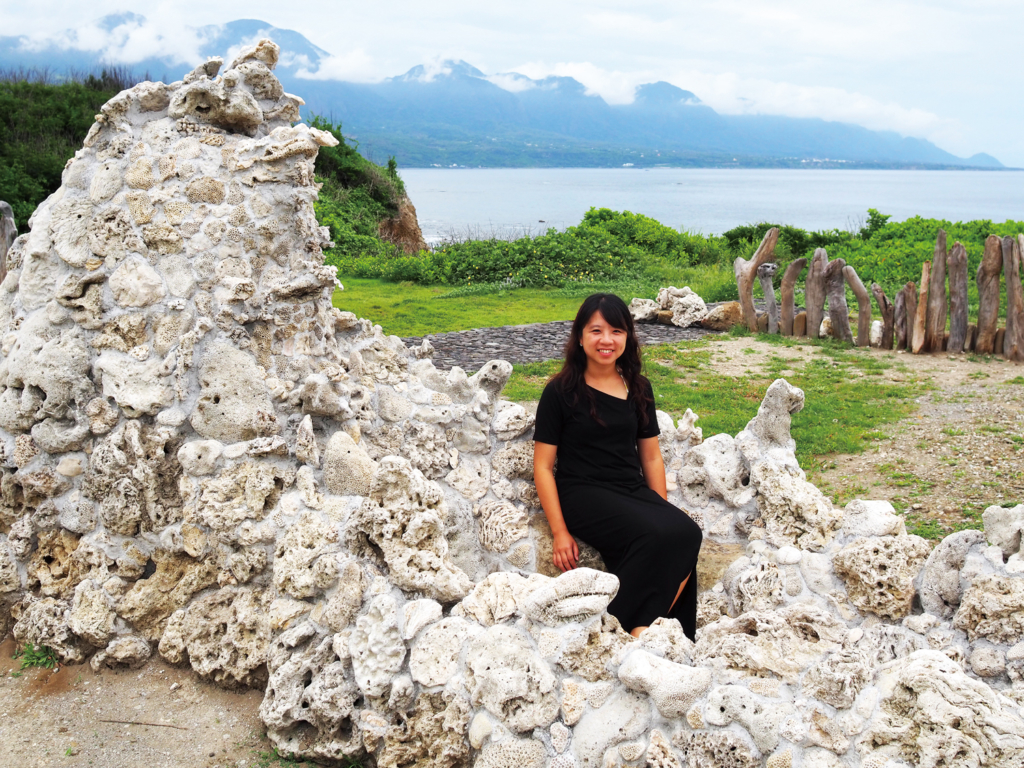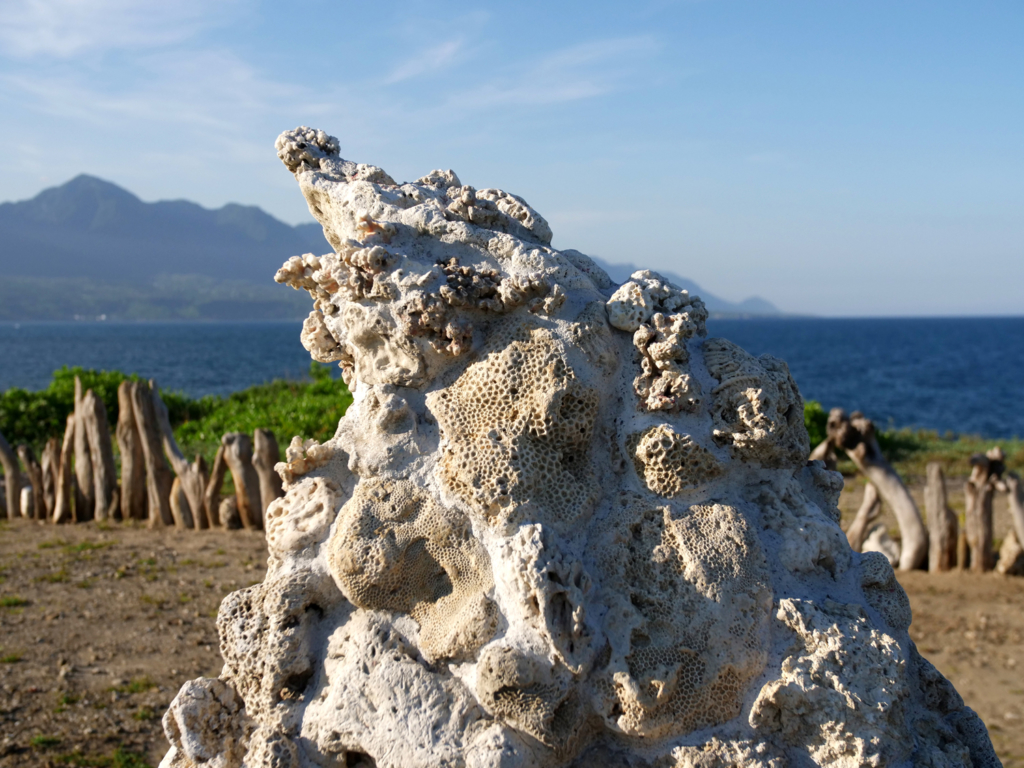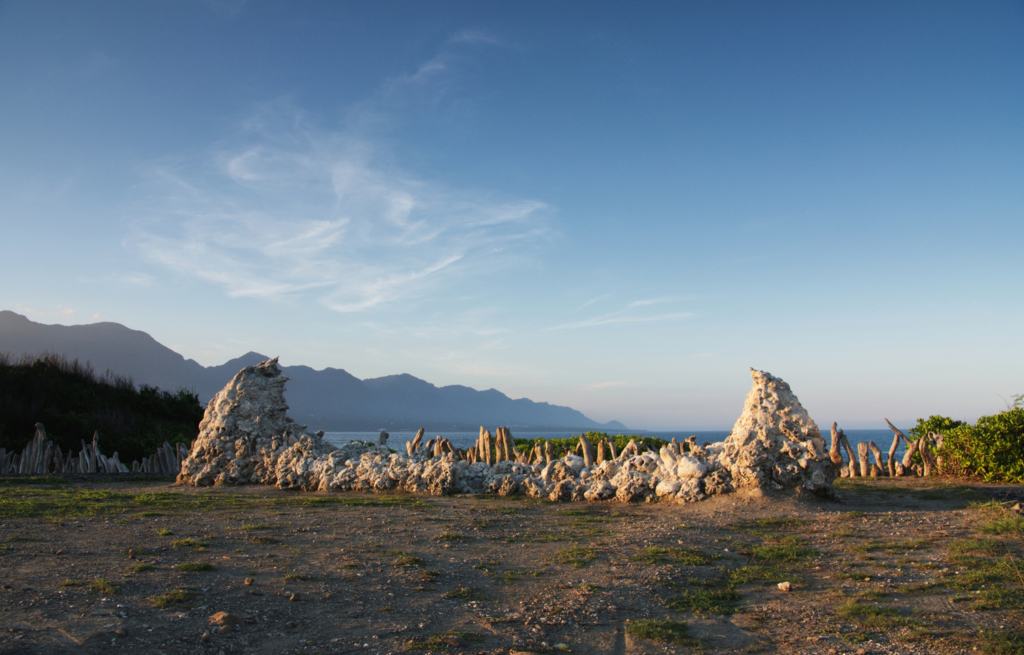波の箱舟ー潮間を編む / 杉原信幸×中村綾花
珊瑚、石、石灰、砂、餅粉、黒糖、牡蠣殻、海藻粉 / H2m×W2m ×D8m / 東海岸大地藝術節2020 / 常設 / 加路蘭、台東 / 2020年
わたしたちはACCのフェローシップで8か月間の台湾原住民文化のリサーチを行い、海山の合間に暮らす台湾原住民文化に心打たれました。アミ族の言葉で髪を洗う場所を意味する加路蘭(カラルアン)に打ち寄せる白波を表す東海岸の珊瑚石、アミ族の発祥の遺跡のある都蘭山の日本時代に神社に使われていたという山石、台湾の伝統的な三合土によって舟の形を作りました。それはランユー島のタオ族の伝統的な舟の形でもあり、小野柳の波の形の奇岩のようでもあります。アートとクラフト、歌、踊り、漁、生活、神話が一体となって東海岸に暮らすアミ族の豊穣な原住民文化と海と島の潮間を舞うように歌う台湾という島を表現する方舟です。
The Ark of Waves – Weaving between the Tides / Sugihara Nobuyuki x Nakamura Ayaka
Coral, stone, lime, sand, sticky rice powder, brown sugar, oyster shell, seaweed powder/ H2m×W2m ×D8m / Taiwan East Coast Land Art Festival / Permanent / Taitung, Taiwan / 2020
We conducted an 8 month Taiwanese indigenous cultures research as an ACC fellowship. And we were impressed with their culture living between sea and mountains. We created the shape of a ship that using east coast coral stones, stones in Dulan mountain and traditional Taiwanese natural cement to represent the white waves that hit the Jialulan (kararuan), where means a place to wash hair in the Ami language. There are ruins of Ami origin on Mt. Dulan, and the stones were used for a shrine during the Japanese era. Its shape is also a traditional boat of the Tao tribe in Orchid Island, and it looks like strange rocks in the shape of waves in Xiaoyeliu.
It is an ark that expresses the rich Indigenous culture of the Ami tribe who live with the sea on the east coast where arts and crafts, songs, dances, fishing, life, and myths are inseparable. It is an ark that expresses the island of Taiwan singing between the sea and the island.
Photo by Cameron Hanson and Sugihara Nobuyuki
Others























